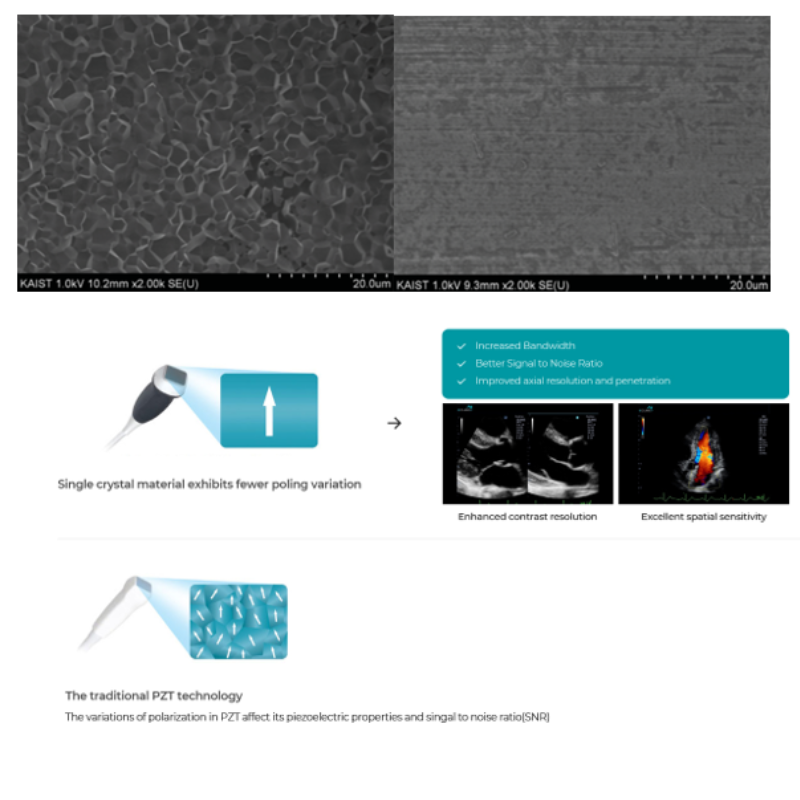Ultrasound Single – Crystal Transducers – What do they mean for you?
Single-Crystal Transducers are becoming increasingly popular in the field of Diagnostic Ultrasound, and are generally associated with the future of the technology. But what does Single-Crystal mean? What are the advantages and disadvantages of this type of transducer with your ultrasound machine? What is the difference in reading an ultrasound image or study?
The evolution of Ultrasound Transducers
For the decades since their inception in the late 1950s, the lenses of Ultrasound transducers have been created using the same material. This material, known as (ferroelectric mixed-metal oxide ceramic) PZT, was both a blessing and a curse to the industry; while it was a superior and efficient material in its time, this led to newer and potentially better materials being left in the research stage as PZT was good enough. Enter PMN-PT (lead-magnesiumniobate lead-titanate); an entirely new material first reported in 1997. PMT-PT is grown and used as oriented single crystals, not as a ceramic like PZT. But what is the difference between these oriented single crystals and the ceramic-style clusters?
Single-Crystal, Single Vision
As the microcrystals in a ceramic are clustered, the sound they create when an electric field is applied to them is fired in the direction, they are oriented. This leads to theoretically wide coverage, but less efficient performance. In PMT-PT, the crystals are aligned in a single direction. This means the sound created and received is completely oriented in the intended direction and leads to an incredible level of performance. The reduced complexity of the array allows for more detailed, lower-noise images with less processing. It is also able to withstand an exponentially larger level of electrical strain and produces less heat. See the comparison of PZT (left) and PMT-PT (right) arrays below, and note how the singular orientation of the crystals creates a cleaner image.
Getting in ahead of the curve
With Single-Crystal transducers you are guaranteed better quality, lower-noise images without the need for additional live processing and post processing. However, PMN-PT is a fragile and difficult material to work with. It would be incredibly difficult to create repeatable, efficient manufacturing processes for such a material. Luckily, decades of research and development have been performed by a company that took the risk to do so, to determine how this material can be properly and efficiently harnessed in ultrasound transducers. The fruit of this research can be found with Alpinion medical systems, which are among the many state-of-the-art offerings at USC. Alpinion has pioneered a method to create Single-Crystal ultrasound transducers efficiently and affordably by taking the risk to work heavily with PMN-PT since the company’s inception. By ignoring the easy route of only selling “what works” with PZT transducers, Alpinion has been able to create and provide a superior imaging product at a reasonable cost.
This means that as the technology to implement PMN-PT crystals improves for most other manufacturers in the market. Alpinion is already over a decade ahead of its competitors with manufacturing processes that only continue to improve on themselves. To really see what Single-Crystal transducers are capable of, contact USC to schedule a virtual or in-person demo of an Alpinion ultrasound machine today!









